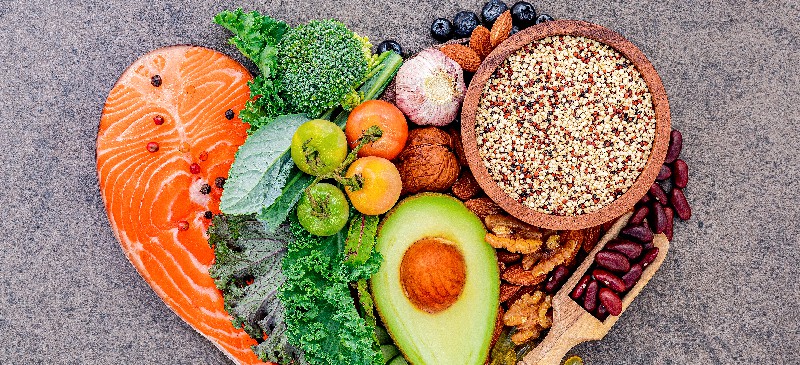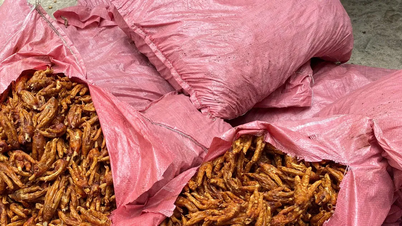A heart-healthy eating plan can help you control your blood cholesterol levels, reducing your risk of heart disease and stroke. These simple cooking tips will help you prepare delicious, heart-healthy meals that can help improve your cholesterol levels by reducing excess saturated and trans fats.
1. How to reduce saturated fat in meat and poultry
The American Heart Association (AHA) recommends a diet that emphasizes fish, poultry, and plant-based proteins, while limiting red and processed meats. The amount of saturated fat in meat can vary widely, depending on the choice and preparation.
Here are some ways to reduce saturated fat in meat:
- Choose cuts of meat with the least amount of fat.
- Choose lean ground meat (no more than 15% fat).
- Minimize processed meats such as deli meats, bacon, ham, sausages, and jerky.
- Trim all fat from meat before cooking.
- Grill instead of pan-frying meats like hamburgers, lamb chops, pork chops, and steak.
- Use a wire rack to drain fat when grilling or roasting. Instead of basting with drippings, keep meat moist with wine, fruit juice, or a marinade made with heart-healthy oils.
- For dishes that require pre-baking, bake the meat in the oven instead of frying it in a pan.
- Choose white meat most often when eating poultry.
- Trim fat from chicken. If you're worried about dry chicken, try basting it with wine, fruit juice, or a heart-healthy oil-based sauce. Or leave the skin on to cook but remove it before eating.
- Cook stews, meats, soups, or other dishes with fat a day in advance until the liquid is refrigerated. Then, skim off the hard fat on top. Do the same with sauces, letting the liquid cool, then skim off the hard fat before making the sauce.

Skimming off the fat from bone broth is a way to reduce the risk of high cholesterol.
2. Eat more fish to lower cholesterol
Fish can be fatty or lean, but they are still low in saturated fat and contain unsaturated fat. Eat at least 2 to 3 ounces of fish per week. Choose oily fish such as salmon and herring, which are high in omega-3 fatty acids.
Cook fish by baking, broiling, or steaming instead of frying, and without adding salt, saturated fat, or trans fat. Fish and shellfish such as shrimp and crab are low in saturated fat and are a healthy alternative to many meats and poultry.
Research has shown the health benefits of eating seafood rich in omega-3 fatty acids, especially when it replaces less healthy proteins that are high in saturated fat and low in unsaturated fat. Prioritizing seafood rich in omega-3 fatty acids as part of a heart-healthy diet helps reduce the risk of cardiovascular disease.

Eat plenty of fish, fruits and fiber to lower cholesterol.
3. Eat less meat to prevent high cholesterol
Try meatless meals that are all about vegetables or beans. Or consider meat as a less-used ingredient, added mainly for flavor to casseroles, stews, low-sodium soups, and spaghetti.
4. Eating fresh vegetables is good for the heart.
If you don't want to boil or make soup, but want more flavor in your vegetables, try cooking them in a little vegetable oil, adding a little water while cooking, if necessary. Add herbs and spices to make the vegetables more flavorful. It's a healthier option than choosing prepackaged vegetables with lots of sauces or seasonings.
Each fruit and vegetable provides a different complex of vitamins, minerals and antioxidants that all contribute to heart health in their own way.
Fresh and frozen fruits and vegetables provide the most nutrients. If you eat canned products, be sure to look for low-sodium, sugar-free canned fruits and vegetables.
5. Use liquid vegetable oils instead of solid fats
Liquid vegetable oils such as canola, safflower, sunflower, soybean, and olive oils can often be used in place of solid fats such as butter or lard. If you must use margarine, try the soft or liquid variety.
6. Reduce fat from milk
Low-fat (1%) or fat-free (skim) milk can be used in many recipes in place of whole milk.
If cheese must be used in recipes, substitute low-fat, low-sodium cheeses, low-fat milk mozzarella (or ricotta) cheese, and other low-fat, low-sodium cheeses that have little or no change in consistency.
7. Increase fiber and whole grains
Consider the following options:
- Toast and crush high-fiber whole-grain bread to make breadcrumbs, stuffings or croutons.
- Replace the bread crumbs in meatloaf with uncooked oatmeal.
- Eat whole fruit for breakfast instead of fruit juice.
- Use brown rice instead of white rice and try whole grain pasta.
- Add a variety of colorful vegetables to your salad. Carrots, broccoli, and cauliflower are high in fiber and add a delicious crunch to your salad.
Source: https://giadinh.suckhoedoisong.vn/7-bi-quyet-nau-an-giup-giam-cholesterol-tot-cho-suc-khoe-172240617164127254.htm


![[Photo] Prime Minister Pham Minh Chinh attends the groundbreaking ceremony of Trump International Hung Yen Project](https://vphoto.vietnam.vn/thumb/1200x675/vietnam/resource/IMAGE/2025/5/21/ca84b87a74da4cddb2992a86966284cf)

![[Photo] Scientific workshop "Building a socialist model associated with socialist people in Hai Phong city in the period of 2025-2030 and the following years"](https://vphoto.vietnam.vn/thumb/1200x675/vietnam/resource/IMAGE/2025/5/21/5098e06c813243b1bf5670f9dc20ad0a)
![[Photo] Prime Minister Pham Minh Chinh receives Rabbi Yoav Ben Tzur, Israeli Minister of Labor](https://vphoto.vietnam.vn/thumb/1200x675/vietnam/resource/IMAGE/2025/5/21/511bf6664512413ca5a275cbf3fb2f65)

![[Photo] Determining the pairs in the team semi-finals of the National Table Tennis Championship of Nhan Dan Newspaper](https://vphoto.vietnam.vn/thumb/1200x675/vietnam/resource/IMAGE/2025/5/21/eacbf7ae6a59497e9ae5da8e63d227bf)
























































































Comment (0)